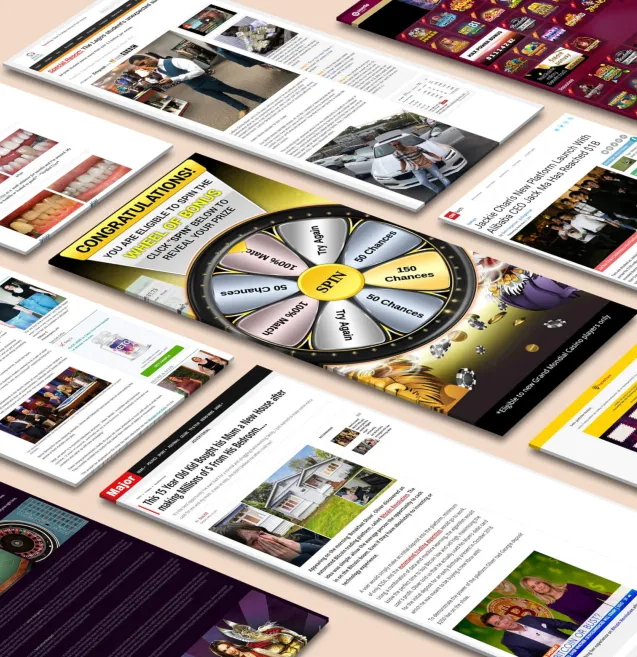
Our spy tools monitor millions of popup and pop-under from over 90+ countries and thousands of publishers.
Get StartedMobile popup advertising is leading the way in digital marketing in 2025, changing the way businesses connect with their mobile audience. With 50% of web traffic now coming from mobile devices, these strategic overlays have become essential tools for capturing user attention and driving conversions.
Think of mobile popups as digital conversation starters - they're your brand's opportunity to engage visitors at crucial moments of their browsing journey. When done right, these ads can:
But there's one thing that can make or break mobile popup advertising: user experience. The days of annoying full-screen popups that upset visitors are over. Today's mobile popups need to find a balance between achieving marketing goals and respecting what users want.
In this guide, you'll discover proven strategies to create mobile popup campaigns that not only capture attention but enhance the overall user experience. We'll explore design principles, targeting techniques, and optimization methods that will transform your mobile popups from potential interruptions into valuable engagement tools.
Mobile popup ads are interactive overlay boxes that appear on mobile websites during user browsing sessions. These strategic marketing tools capture user attention by displaying targeted messages, promotional offers, or important announcements directly on the screen.
The digital landscape has shifted dramatically toward mobile-first experiences. Mobile devices now account for 50% of global web traffic, creating a prime opportunity for businesses to connect with their audience through popup advertising strategy. This mobile-centric approach aligns with modern consumer behavior patterns, where users spend an average of 4.8 hours daily on their smartphones.
Mobile popups deliver substantial benefits for businesses:
A successful mobile popup strategy requires careful consideration of:
The mobile popup landscape continues to evolve with technological advancements. Businesses implementing thoughtful popup strategies gain a competitive edge in capturing mobile users' attention and driving meaningful conversions.
User experience is crucial for successful mobile popup advertising. When people browse on their phones, they expect smooth and valuable interactions. If the UX design is poor, potential customers may leave within seconds.
Creating non-intrusive mobile popups requires a strategic approach focused on user needs and preferences. Here's what makes a popup user-friendly:
Mobile popups work best when they enhance rather than interrupt the user journey. By prioritizing user experience in your popup strategy, you create opportunities for meaningful engagement while maintaining visitor satisfaction.
Responsive design is crucial for successful mobile popup advertising. Your popup must adapt seamlessly across different screen sizes - from the latest iPhone Pro Max to compact Android devices. A responsive popup automatically adjusts its dimensions, maintaining readability and functionality regardless of the user's device.
Customizing popup templates helps match your brand identity and resonates with your target audience. Start with a basic template and adapt these key components:
Your popup message needs laser-focused clarity. Strip away unnecessary words and emphasize the value proposition. A compelling headline paired with crisp supporting text drives action. Example structure:
"Get 15% Off Your First Order" "Enter your email for an instant discount code"
The popup's exit button must be easily visible - use contrasting colors and appropriate sizing. Place it in an intuitive location, typically the top-right corner or below the main content.
Interactive features transform standard mobile popups into engaging experiences that capture user attention. Gamification techniques create playful interactions that users genuinely enjoy, leading to higher engagement rates and conversions.
These interactive elements tap into users' natural desire for entertainment and rewards, making the popup experience feel less like advertising and more like a game.
Countdown timers add another layer of engagement by creating a sense of urgency. You can implement timers in several ways:
Research shows that countdown timers can increase conversion rates by up to 30% by triggering FOMO (Fear of Missing Out) in users. The key is setting realistic timeframes that match your offer's value - too short feels manipulative, too long loses urgency.
Combining gamification with countdown elements creates dynamic popups that users actively participate in rather than immediately dismiss. A spin-the-wheel campaign with a 10-minute timer to claim the prize exemplifies this powerful combination.
Strategic targeting transforms generic mobile popups into powerful conversion tools. Behavioral targeting techniques analyze user actions to deliver personalized experiences at optimal moments.
Exit intent popups track mouse movements to detect when users are about to leave your site. On mobile devices, these triggers activate through actions like rapid scrolling up or switching between tabs. You can display targeted offers or content to re-engage these users before they leave.
Cart abandonment strategies leverage user purchase intent:
Advanced targeting options include:
By mapping user behavior patterns, you can create targeted popup campaigns that resonate with specific segments of your audience. This precision targeting reduces popup fatigue and increases conversion rates through relevant, timely offers.
A/B testing is an important part of improving your mobile popup strategy. By testing different versions of your popups, you can find out which ones work best for your audience.
Your popup testing strategy should focus on measurable metrics:
Real-world data shows that optimized mobile popups can achieve conversion rates up to 11.85% higher than non-optimized versions. Through systematic testing, you can identify patterns in user behavior and preferences that inform your optimization decisions.
Remember to analyze both quantitative data and qualitative feedback from users. Heat maps and user session recordings provide valuable insights into how visitors interact with your popups, helping you make data-driven improvements to your campaigns.
Additionally, understanding the best time to display popup ads can significantly enhance your revenue by ensuring maximum visibility and engagement with your target audience.
User-friendly mobile popups stand as a cornerstone of successful digital marketing strategies in 2025. The evolution of these advertising tools continues to prioritize seamless user experiences while delivering value to both businesses and consumers.
Key Future Trends:
The next generation of mobile popup advertising embraces sophisticated technology while maintaining simplicity in user interaction. Smart targeting combines with intuitive design to create experiences that feel natural and valuable. Businesses that adapt to these emerging trends position themselves to build stronger connections with their audience through respectful, engaging popup strategies.
Remember: The most effective mobile popups of tomorrow will be those that users want to interact with, not those they feel forced to engage with. To achieve this, it's crucial for pop-up ads to not only comply with search engines’ mobile-friendly rules but also effectively convert users. Here are some tips for designing mobile-friendly pop-up ads that convert.
Receive top converting landing pages in your inbox every week from us.
How-To
AI is transforming the way advertisers approach pop campaigns in 2025. Discover how automation, predictive analytics, and real-time optimization can enhance targeting and boost engagement. Learn practical tips for creating smarter, high-performing pop ads that deliver measurable results. Perfect for marketers ready to stay ahead in the evolving world of AI-driven advertising.
Priya Kapoor
7 minDec 8, 2025
None
Q4’s advertising landscape is crowded, but smart pop ad strategies can help your brand stand out. Learn how to capture attention, reduce bounce rates, and drive conversions even amid the seasonal overload. Explore targeting techniques, creative best practices, and timing tactics that deliver real results. Ideal for advertisers looking to make the most of Q4’s busiest—and most competitive—season.
David Kim
7 minDec 3, 2025
In-Depth
After the holiday rush, analyzing ad performance is key to improving future results. Discover how AI can uncover hidden insights, identify optimization opportunities, and refine your targeting for better ROI. Learn how data-driven automation helps sustain momentum even after peak season. Ideal for marketers seeking smarter ways to enhance post-holiday campaign performance.
Samantha Reed
7 minNov 28, 2025




